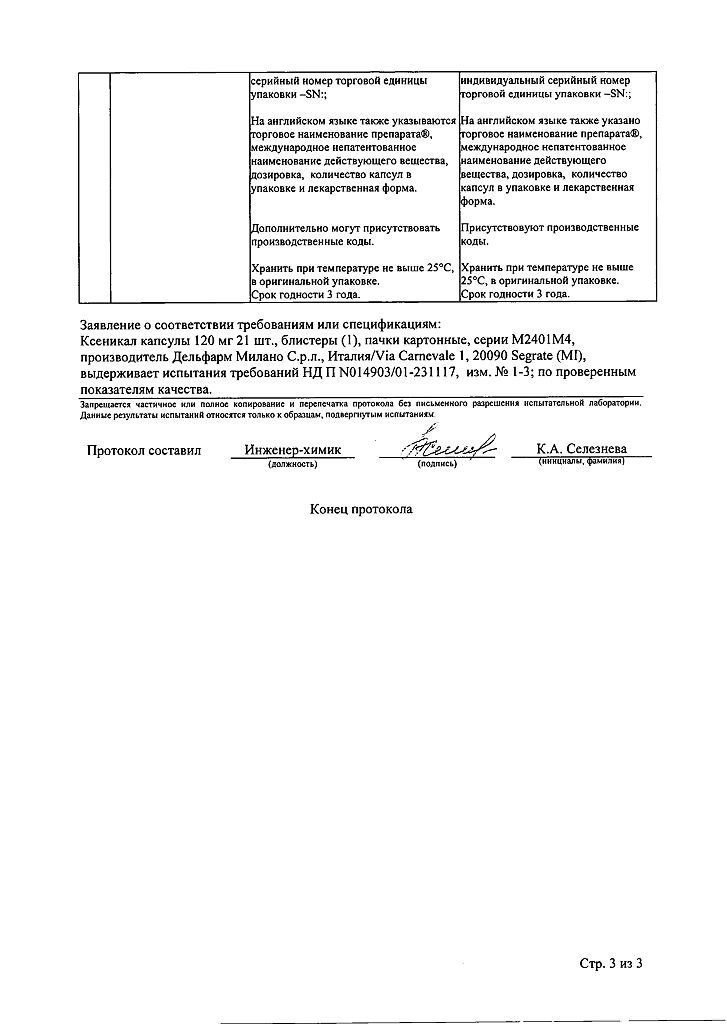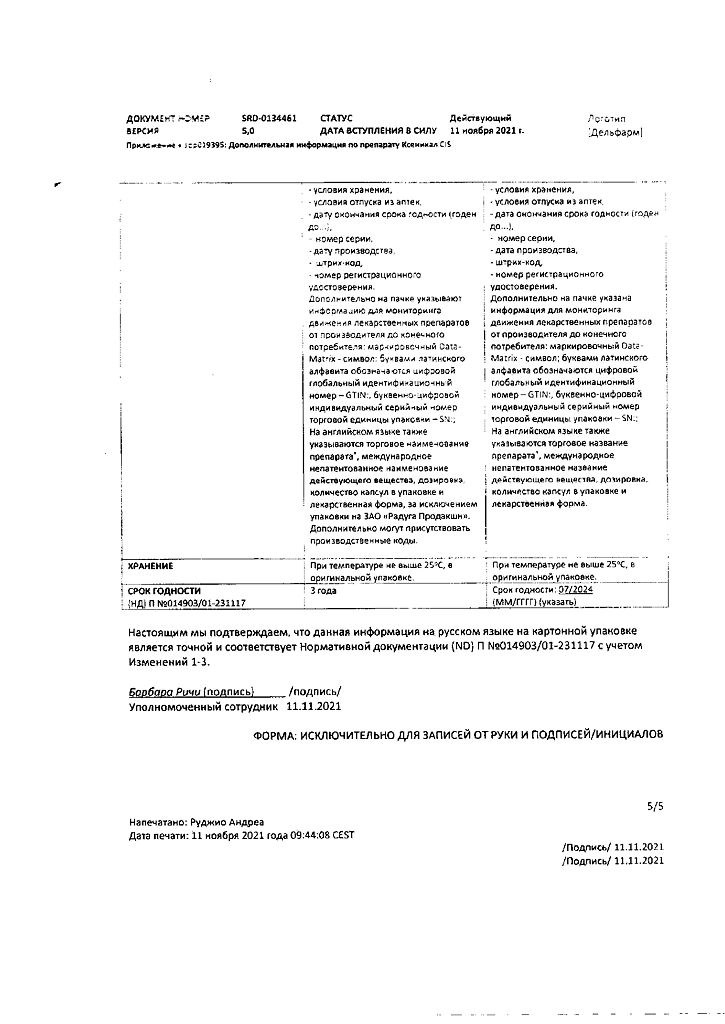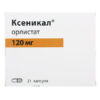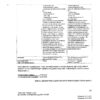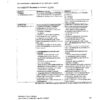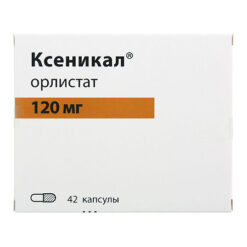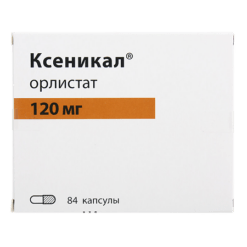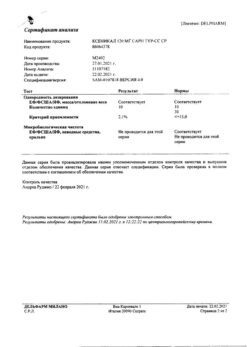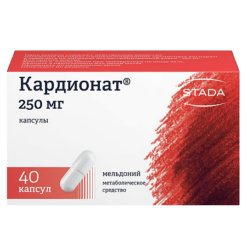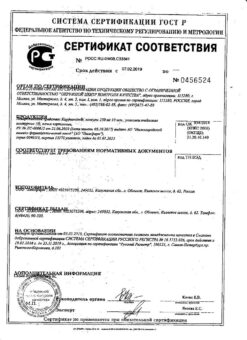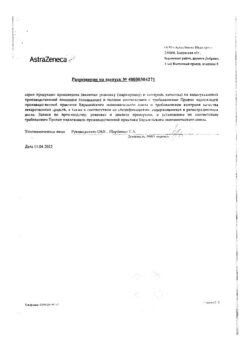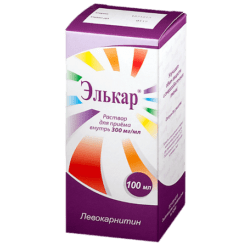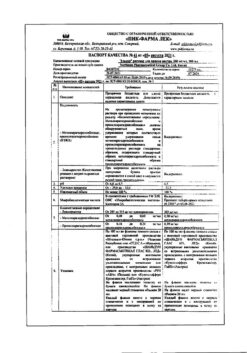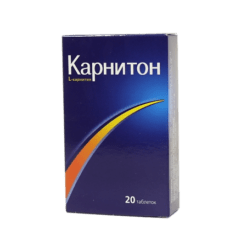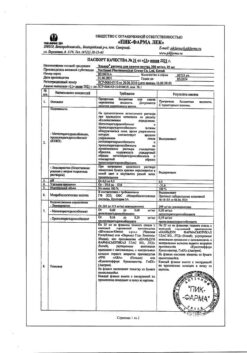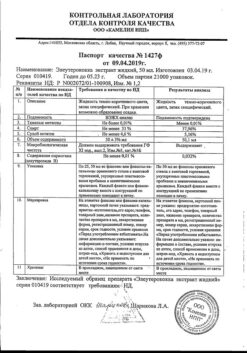No products in the cart.
Xenical, 120 mg capsules 21 pcs
€28.53 €23.78
Description
Xenical is a specific inhibitor of gastrointestinal lipases with prolonged action. Its therapeutic effect is carried out in the lumen of the stomach and small intestine and consists in formation of a covalent bond with the active serine site of gastric and pancreatic lipases. The inactivated enzyme loses its ability to break down food fats coming in the form of triglycerides into absorbable free fatty acids and monoglycerides.
With no triglycerides being absorbed, the resulting reduced caloric intake leads to weight loss. This way the therapeutic effect of the drug is carried out without absorption into the systemic blood flow.
Based on the results of fat content in feces, the action of orlistat starts 24-48 hours after taking the drug. After discontinuation of the drug, the fecal fat content in 48-72 h usually returns to pre-therapy levels.
Pharmacokinetics
Intake
In volunteers with normal body weight and obesity, systemic effects of the drug are minimal. Eight hours after oral administration of the drug, unchanged orlistat could not be detected in plasma, which means that its concentrations are below the 5 ng/mL level.
In general after therapeutic doses unchanged orlistat was detected in plasma only rarely, and its concentrations were extremely low (<10 ng/ml or 0.02 μmol). There were no signs of cumulation, which confirms that absorption of the drug is minimal.
Distribution
The amount of distribution could not be determined because the drug is very poorly absorbed. In vitro orlistat is more than 99% bound to plasma proteins (mainly to lipoproteins and albumin). In minimal amounts orlistat can penetrate into erythrocytes.
Metabolism
According to the data obtained in the experiment on animals, orlistat metabolism is carried out mainly in the intestinal wall. In a study in obese subjects, we found that approximately 42% of the minimal fraction of the drug that undergoes systemic absorption is due to two main metabolites, M1 (a four-member hydrolyzed lactone ring) and M3 (M1 with a cleaved N-formylleucine residue).
M1 and M3 molecules have an open β-lactone ring and are extremely weak inhibitors of lipase (1000 and 2500 times weaker than orlistat, respectively). Given this low inhibitory activity and low plasma concentrations (average 26 and 108 ng/ml, respectively) after therapeutic doses, these metabolites are considered pharmacologically inactive.
Studies in normal and overweight subjects have shown that the major route of elimination is excretion of the unabsorbed drug in the feces. About 97% of the administered dose of the drug was excreted in the feces, with 83% in the form of unchanged orlistat.
The cumulative renal excretion of all substances structurally related to orlistat is less than 2% of the administered dose. The time to complete elimination of the drug from the body (in the feces and urine) is 3-5 days. The ratio of orlistat excretion routes in normal and overweight volunteers was similar. Both orlistat and M1 and M3 metabolites can be excreted with bile.
Pharmacokinetics in specific clinical groups
Plasma concentrations of orlistat and its metabolites (M1 and M3) in children do not differ from those in adults when comparing the same doses of the drug. Daily excretion of fat with feces was 27% of intake with food with orlistat therapy and 7% with placebo.
Indications
Indications
Long-term therapy for obese or overweight patients, incl. having risk factors associated with obesity, in combination with a moderately hypocaloric diet; in combination with hypoglycemic drugs (metformin, sulfonylurea derivatives and/or insulin) or a moderately hypocaloric diet in patients with type 2 diabetes mellitus who are overweight or obese.
Pharmacological effect
Pharmacological effect
Xenical is a specific inhibitor of gastrointestinal lipases with a long-lasting effect. Its therapeutic effect occurs in the lumen of the stomach and small intestine and consists of the formation of a covalent bond with the active serine site of gastric and pancreatic lipases. The inactivated enzyme then loses the ability to break down food fats, which come in the form of triglycerides, into absorbable free fatty acids and monoglycerides.
Since unsplit triglycerides are not absorbed, the resulting decrease in caloric intake into the body leads to a decrease in body weight. Thus, the therapeutic effect of the drug is carried out without absorption into the systemic circulation.
Based on fecal fat results, the effects of orlistat begin 24 to 48 hours after dosing. After discontinuation of the drug, the fat content in feces usually returns to pre-therapy levels within 48–72 hours.
Pharmacokinetics
Suction
In volunteers with normal body weight and obesity, systemic exposure to the drug is minimal. 8 hours after oral administration of the drug, unchanged orlistat could not be determined in plasma, which means that its concentrations are below the level of 5 ng/ml.
In general, after taking therapeutic doses, it was possible to detect unchanged orlistat in plasma only in rare cases, and its concentrations were extremely low (< 10 ng/ml or 0.02 μmol). There were no signs of accumulation, which confirms that the absorption of the drug is minimal.
Distribution
The volume of distribution cannot be determined because the drug is very poorly absorbed. In vitro, orlistat is more than 99% bound to plasma proteins (mainly lipoproteins and albumin). In minimal quantities, orlistat can penetrate red blood cells.
Metabolism
Judging by the data obtained in animal experiments, orlistat metabolism occurs mainly in the intestinal wall. In a study in obese individuals, it was found that approximately 42% of the minimal fraction of the drug that is subject to systemic absorption is accounted for by two main metabolites – M1 (a four-membered hydrolyzed lactone ring) and M3 (M1 with a cleaved N-formylleucine residue).
Molecules M1 and M3 have an open β-lactone ring and inhibit lipase extremely weakly (1000 and 2500 times weaker, respectively, than orlistat). Given this low inhibitory activity and low plasma concentrations (average 26 and 108 ng/ml, respectively) after therapeutic doses, these metabolites are considered pharmacologically inactive.
Removal
Studies in normal and overweight individuals have shown that the main route of elimination is excretion of unabsorbed drug in the feces. About 97% of the administered dose of the drug was excreted in the feces, with 83% as unchanged orlistat.
The cumulative renal excretion of all substances structurally related to orlistat is less than 2% of the administered dose. The time until the drug is completely eliminated from the body (with feces and urine) is 3–5 days. The ratio of orlistat elimination routes in volunteers with normal and overweight was the same. Both orlistat and the metabolites M1 and M3 can be excreted in the bile.
Pharmacokinetics in special clinical groups
Plasma concentrations of orlistat and its metabolites (M1 and M3) in children do not differ from those in adults when comparing the same doses of the drug. Daily fecal fat excretion was 27% of dietary intake with orlistat and 7% with placebo.
Special instructions
Special instructions
Increasing the dose of orlistat above the recommended one (120 mg 3 times a day) does not lead to an increase in its therapeutic effect.
The effectiveness and safety of Xenical in patients with impaired liver and/or kidney function, as well as in elderly and pediatric patients (under 12 years of age) have not been studied.
During therapy with Xenical, the patient should receive a balanced, moderately hypocaloric diet containing no more than 30% of calories in the form of fat. With a higher fat content in the diet, the likelihood of adverse reactions from the gastrointestinal tract increases.
Reducing patient weight may improve metabolism in patients with diabetes and require a reduction in the dose of oral antidiabetic drugs.
In clinical studies, in the majority of patients receiving Xenical for 2 full years, the concentrations of vitamins A, D, E, K and beta-carotene remained within normal limits.
In some cases, to ensure adequate intake of all nutrients into the body, multivitamins can be prescribed, which should be taken no less than 2 hours after taking Xenical or before bedtime.
Active ingredient
Active ingredient
Orlistat
Composition
Composition
1 capsule contains:
Active ingredient:
orlistat 120 mg;
Excipients:
talc – 0.24 mg;
Composition of the capsule shell:
gelatin,
indigo carmine,
titanium dioxide
Pregnancy
Pregnancy
Due to the lack of clinical data, Xenical should not be prescribed to pregnant women.
The excretion of orlistat into breast milk has not been studied and should not be taken while breastfeeding.
Contraindications
Contraindications
hypersensitivity to the drug or any other components contained in the capsule;
chronic malabsorption syndrome;
cholestasis.
Side Effects
Side Effects
From the digestive system: oily discharge from the rectum, gas, urgency to defecate, steatorrhea, increased frequency of bowel movements and fecal incontinence (as a rule, these phenomena are transient and occur in the first 3 months of treatment); rarely – pain or discomfort in the abdomen, flatulence, loose stools, pain or discomfort in the rectum.
Allergic reactions: skin rash, itching, angioedema, anaphylactic reactions.
Interaction
Interaction
There were no interactions with amitriptyline, atorvastatin, biguanides, digoxin, fibrates, fluoxetine, losartan, phenytoin, oral contraceptives, phentermine, pravastatin, warfarin, nifedipine GITS (gastrointestinal therapeutic system) and nifedipine slow release, sibutramine or alcohol (based on drug interaction studies). However, it is necessary to monitor INR values during concomitant therapy with warfarin or other oral anticoagulants.
When taken simultaneously with the drug Xenical, a decrease in the absorption of vitamins D, E and beta-carotene was noted. If multivitamins are recommended, they should be taken at least 2 hours after taking Xenical or before bedtime.
When taking the drug Xenical and cyclosporine simultaneously, a decrease in plasma concentrations of cyclosporine was observed, therefore, more frequent determination of plasma concentrations of cyclosporine is recommended when taking cyclosporine and the drug Xenical simultaneously.
When amiodarone was administered orally during therapy with Xenical, a decrease in the systemic exposure of amiodarone and desethylamiodarone was observed (by 25-30%), however, due to the complex pharmacokinetics of amiodarone, the clinical significance of this phenomenon is not clear. The addition of Xenical to long-term amiodarone therapy may result in a decrease in the therapeutic effect of amiodarone (no studies have been conducted).
The simultaneous use of Xenical and acarbose should be avoided due to the lack of data from pharmacokinetic studies.
Cases of seizures have been observed when taking orlistat and antiepileptic drugs simultaneously. A cause-and-effect relationship between the development of seizures and orlistat therapy has not been established. However, patients should be monitored for possible changes in seizure frequency and/or severity.
Storage conditions
Storage conditions
In a place protected from moisture, at a temperature not exceeding 25 °C
Shelf life
Shelf life
3 years
Manufacturer
Manufacturer
Delfarm Milano S.r.L./Hoffmann la Roche, Italy
Additional information
| Shelf life | 3 years |
|---|---|
| Conditions of storage | In a moisture-proof place, at a temperature not exceeding 25 °C |
| Manufacturer | Delpharm Milano S.r.l./Hoffmann la Roche, Italy |
| Medication form | capsules |
| Brand | Delpharm Milano S.r.l./Hoffmann la Roche |
Other forms…
Related products
Buy Xenical, 120 mg capsules 21 pcs with delivery to USA, UK, Europe and over 120 other countries.


